The American beautyberry (
Callicarpa americana) is a large Southeast native shrub that not only looks its best in fall, but also offers habitat and food to native birds. Its bright purple berries bring unique seasonal color and provide sustenance for birds into winter, making it a fabulous addition to the Southern garden that’s sure to start a conversation.
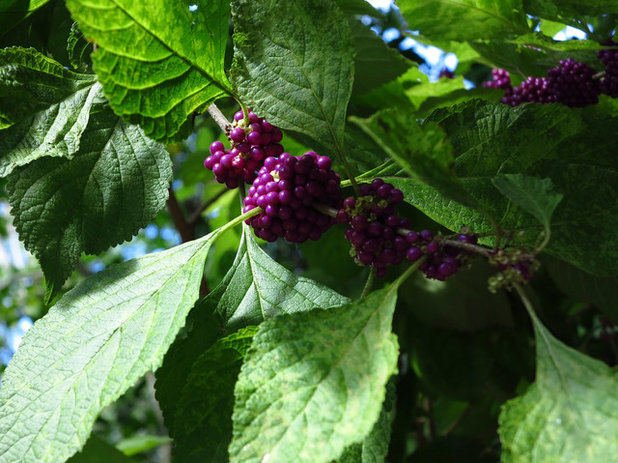 Photo by Flickr user mazola_jr
Photo by Flickr user mazola_jr
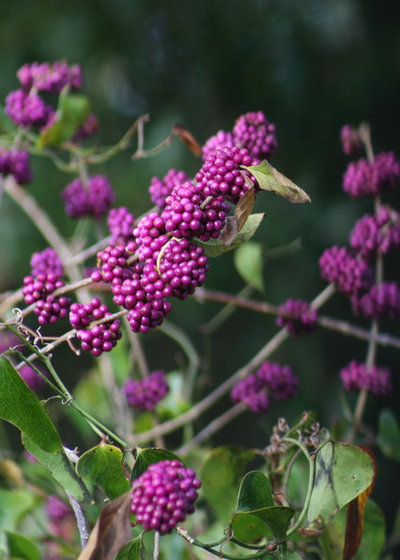 Botanical name: Callicarpa americanaCommon name:
Botanical name: Callicarpa americanaCommon name: American beautyberry
Origin: Native to the Southeastern U.S.
Where it will grow: Hardy to 0 degrees Fahrenheit (USDA zones 6 to 10; find your zone)
Water requirement: Medium — water when it’s newly transplanted to help establish it; otherwise, average rainfall in the Southeast U.S. provides plenty of water for this native plant
Light requirement: Full sun to dappled or partial shade
Soil requirement: Moist soil, sand or clay with organic matter
Mature size: 5 to 8 feet tall and up to 6 feet wide
Benefits and tolerances: Attracts bees and butterflies while in bloom; feeds the birds from late summer to early winter; provides habitat for birds year-round; tolerates clay soil
Seasonal interest: Berries in autumn provide beautiful seasonal interest; the berries persist into early winter, even after the leaves have died back.
When to plant: Spring or fall
Photo by Marsanne Petty
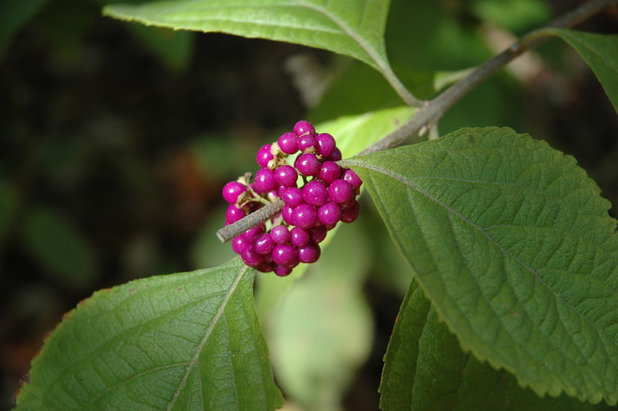
J. Peterson Garden Design
Distinguishing traits. The overall form of this shrub is an open habit with arching branches. The flowers are small, and the leaves are oval to elliptical. The berries, once again, are this plant’s distinguishing trait. Many people discover this plant for the first time in autumn, when they notice the bright purple berries in a neighbor’s garden or nearby woodland.
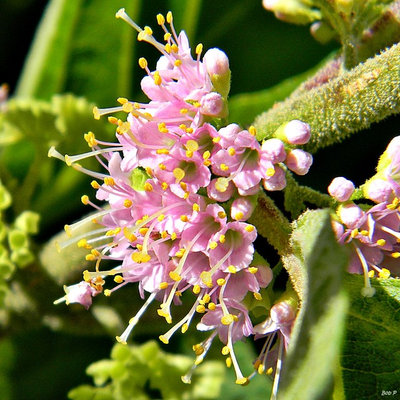
The flowers are inconspicuous and not very showy, but they are a great nectar source for butterflies and bees. This close-up shows the clusters of flowers gathered near the petiole. The flowers develop into clumps of purple fruit by late summer.
How to use it. It can be used as a naturalized shrub, an understory plant in a woodland garden or the backdrop to a perennial flower bed. Plant several in a clump and along with wildflowers to attract pollinators for maximum berry production.
Planting notes. Beautyberry is easily transplanted, propagated from softwood cuttings or started from seed. Tolerates moist soil, sand or clay with organic matter. Plant it in full sun to dappled or partial shade.
Photo by Bob Peterson
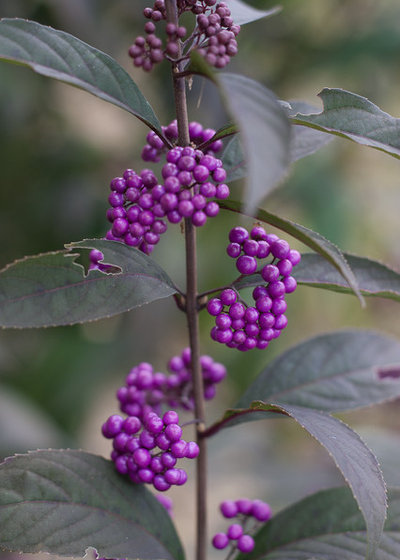
Proven Winners
Nonnative species. Callicarpa americana is the only species of Callicarpa that’s native to the United States. There are other cultivars based on nonnative species that have been bred for cold hardiness and a more compact form. Check with your nursery before purchasing a nonnative Callicarpa, because it is highly invasive in some areas.
- Callicarpa dichotoma (purple beautyberry): Native to Korea and invasive in some areas.
- Callicarpa ‘Purple Pearls’ (Purple Pearls beautyberry, shown): Has a purple tinge to the foliage and a tall and narrow form. It’s a cross between Callicarpa dichotoma and Callicarpa kwantungensis; the name is trademarked by Proven Winners
- Callicarpa bodinieri (Bodinier beautyberry): A nonnative species that’s widely used in colder climates and is cold hardy to zone 5. Its form overall is more compact, with tighter, slenderer leaves than those of the native species.
Use nonnative cultivars with caution. Check your state’s list of invasive species prior to planting a nonnative Callicarpa in your yard. The fruits are a favorite for birds, who will easily spread the seeds.





